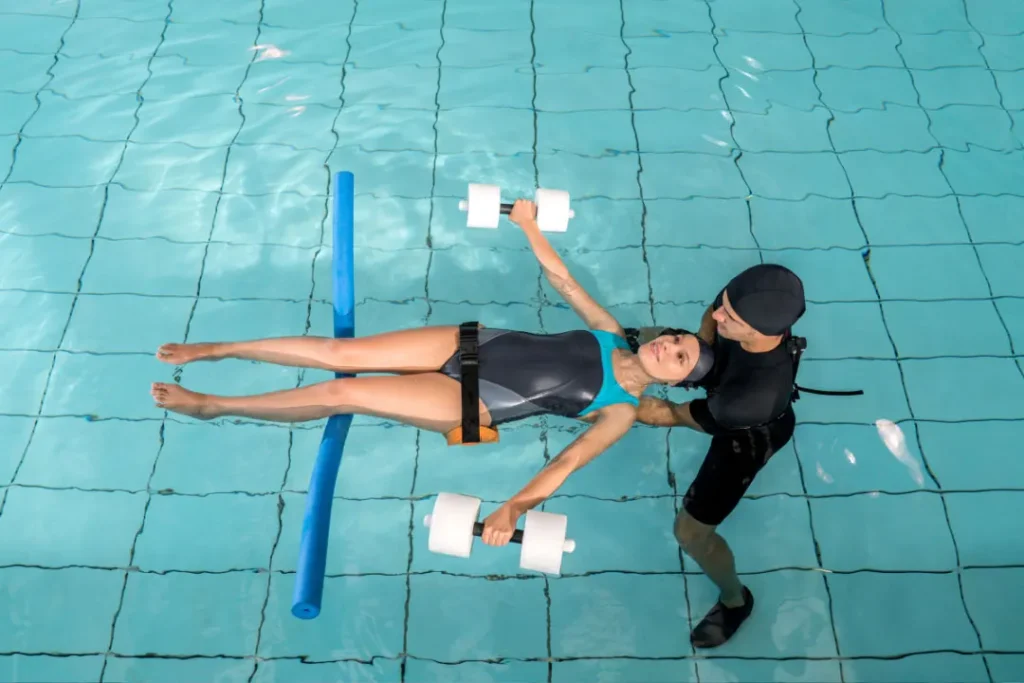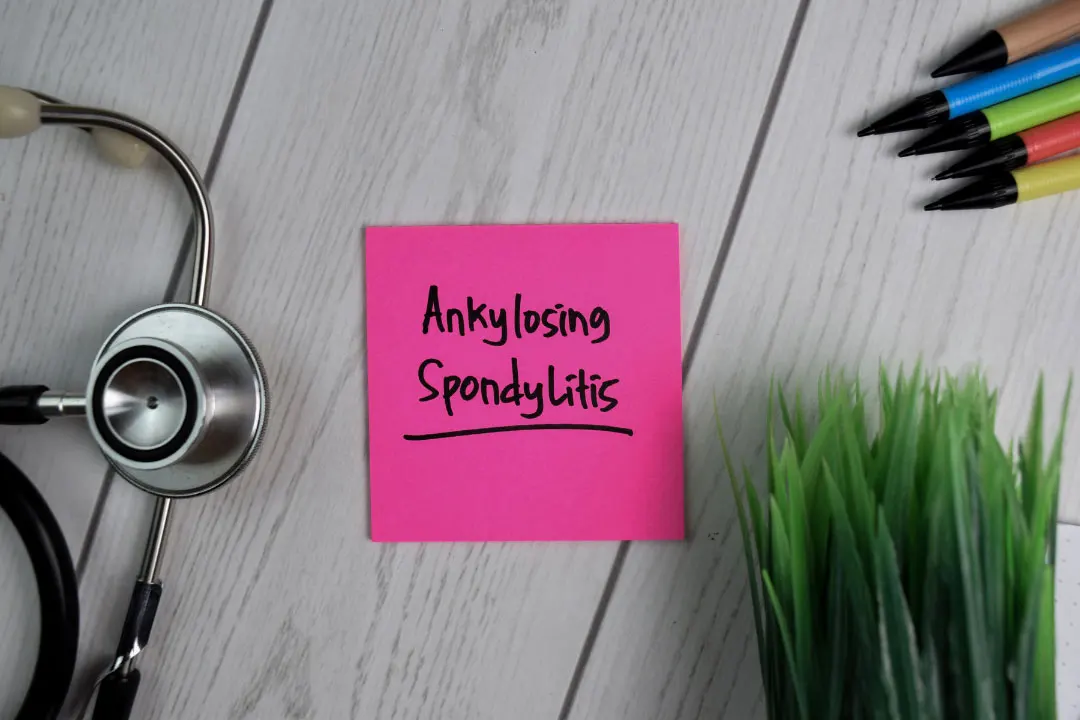Description
A chronic inflammatory condition known as ankylosing spondylitis (AS) primarily affects the axial skeleton, notably the sacroiliac joints and spine. Inflammation, stiffness, pain, and eventually the fusion of the damaged joints are its hallmarks, which results in a reduction in mobility and functioning. Spondyloarthropathies, which include AS, are a class of illnesses that have similar clinical characteristics and genetic predispositions.
Inflammatory backache that gets better with exercise is frequently present together with persistent stiffness and pain in the hips, lower back, and buttocks in a clinical diagnosis of AS. Genetic components, environmental factors, and immune system irregularities all play a role in the etiology of AS. Clinical assessment, imaging studies, medical records, and laboratory tests all contribute to the diagnosis.
For those with AS, gradual disease progression, symptom relief, and enhanced standard of life heavily depend on early diagnosis and effective care. Since AS begin manifesting as early as age 20, it is prudent that you keep a close eye on any potential symptoms you be be exhbiting. AS currently has no known, reliable cure, therefore making it incredibly challenging to control. However, treatments do exist that can help mitigate the negative effects of the disease.
You May Also Like:
Make the Perfect Plant Based Protein Shake: The Top 7 Tips
Your Best Muscle Recovery Ally: Frog Fuel Power Protein vs. Optimum Nutrition Gold Standard Whey
Ankylosing Spondylitis (AS): Description, Causes, And Treatment Protocol is an original (HealthXWire) article.
Possible Causes
Ankylosing spondylitis (AS) has an ill-defined exact cause. Nevertheless, research indicates that the illness may occur because of a mix of environmental, genetic, and immunological factors. The following are some potential causes and contributing aspects of AS: –
- Environmental Triggers: In those who are genetically predisposed, environmental circumstances may cause the beginning of AS. According to certain research, some diseases, notably genitourinary or gastrointestinal infections, can serve as AS triggers. In people with a genetic predisposition, these illnesses may set off an immunological response that results in inflammation of the spine and joints.
- Genetic Factors: The genetic component of AS is significant. Strong links exist between AS development and the existence of a certain gene called HLA-B27. Not everyone who carries the HLA-B27 gene, nevertheless, will get AS, suggesting that additional genetic and environmental variables may contribute to the condition. HLA-B27 has been linked to AS, although there is also evidence that HLA-B7, HLA-B40, and HLA-DR1 are connected to genetic markers.
- Gut Microbiome: The gut flora may play a role in the beginning and development of AS, according to a recent study. Immune dysfunction and chronic inflammation, two characteristics of AS, may be impacted by changes in the gut microbiota’s composition and activity. To completely comprehend the intricate connection involving gut microbiota and AS, more research is required.
- Immune System Dysfunction: Because AS constitutes an autoimmune illness, the immune system’s reaction mistakenly assaults the body’s inherent tissues. In AS, the body’s immune system affects the joints, particularly the spine and sacroiliac joints, causing inflammation, bone remodeling, and tissue damage. The precise processes behind the immune system malfunction in AS are being researched.

Exacerbating and Mitigating Factors
Ankylosing spondylitis (AS) symptoms and disease development can be strongly impacted by aggravating and moderating circumstances. In order to improve treatment outcomes and the general standard of life for people with AS, recognizing and controlling these characteristics might be crucial. Below are some commonly reliable symptom-reducing agents for AS: –
Exacerbating Factors: –
Poor Ergonomics and Posture: The spine can get stressed from poor posture, including slouching or spending too much time sitting without enough support. Inadequate ergonomics while working or during routine tasks might also lead to more pain and suffering.
Inactivity and Extended Rest: Individuals with AS may become more stiff and painful after extended periods of immobility or inactivity. Muscle deterioration, decreased flexibility, and joint instability can all be caused by inactivity and a lack of consistent exercise.
Smoking: Smoking has been connected to more severe AS symptoms and a quicker rate of disease development. It can exacerbate inflammation, lessen therapeutic response, and raise the chance of problems.
Emotional and Stress-related Factors: People with AS may experience worsening symptoms because of, stress and emotional variables including worry and sadness. Stress can cause flare-ups or amplify the sensation of pain.
Alcohol Consumption: Overindulging in alcohol can have a detrimental effect on liver health and bone health, which can alter how certain drugs used to treat AS are metabolized and work.
Mitigating Factors: –
- Ergonomics and Good Posture: It is possible to lessen spinal stress and increase comfort while going about your daily business by maintaining good posture and utilizing ergonomic aids, like standing workstations and ergonomic seats.
- Sufficient Sleep and Rest: For treating symptoms and promoting general wellness in those with AS, getting adequate rest and sleep is crucial. An accommodating mattress and the right sleeping postures might lessen pain and stiffness when you wake up.
- Exercise and Physical Activity: The management of AS requires regular exercise and physical activity. Low-impact workouts, like yoga, walking, or swimming, help preserve joint flexibility, building muscle, enhancing posture, and decreasing pain and stiffness.
- Stress Management Techniques: Stress-relieving methods, like mindfulness exercises, counseling, and relaxation techniques, can assist you in dealing with stress caused by AS and enhance your mental well-being.
- Supportive Footwear: If you have AS, you may experience less pain in your back and hips so long as you wear suitable and supportive footwear.
Nutrition with a Balanced Diet: A balanced, healthful diet high in vegetables, fruits, whole grains, and lean meats, alongside omega-3 fatty acids, might improve an AS patient’s general health and reduce inflammation.


Standard Treatment Protocol
In order to treat ankylosing spondylitis, a mix of non-pharmacological methods, pharmacological treatments, and physical therapy is frequently used. Following are some examples of the particular treatment: –
Non-pharmacological Approaches: These include: –
- Posture and Ergonomics: The management of AS symptoms depends heavily on correct posture and ergonomics. The tension on the spine can be reduced and comfort can be increased by maintaining excellent posture, employing supportive chairs, and using ergonomic equipment.
- Physical Activity and Workouts: Exercise, particularly stretches and strengthening exercises, should often be done to manage AS. Maintaining joint mobility, enhancing general physical function, and enhancing posture are all aided by it. Exercises that have low impact, including swimming, yoga, and aerobics, are especially advantageous.
- Heat and Cold Treatment: Inflammation, pain, and muscle tension may be reduced with the usage of heat, i.e., warm showers and hot packs, along with cold, i.e., ice packs.
- Support and Education for Patients: For those with AS, self-management strategies, dietary changes, and illness education are essential. Psychological support and assistance with coping with the difficulties faced by people with an ongoing disease can be obtained from support networks and counseling.
Pharmacological Interventions: These include: –
- Disease-modifying Antirheumatic Drugs (DMARDs): Methotrexate or sulfasalazine are examples of DMARDs that may be administered when symptoms become more acute or NSAIDs are ineffective. These drugs assist to lessen inflammation and stop the spread of disease.
- Biologic Agents: In certain AS patients, biologic drugs that target particular inflammatory pathways, including tumor necrosis factor (TNF) inhibitors such as adalimumab and etanercept, are successful in lowering symptoms and delaying the course of the disease.
- Nonsteroidal Anti-inflammatory Drugs (NSAIDs): Naproxen and ibuprofen, two NSAIDs, are frequently used for AS in order to control pain and minimize inflammation. However, they do not stop the disease’s progression. They only serve to relieve symptoms.
Physical Treatment and Rehabilitation: These include: –
Physical Therapy
Programs for physical therapy are designed to increase muscular strength, enhance general physical function, and improve joint mobility. Therapists might offer tailored workout regimens, manual therapy, and advice on posture improvement methods.
- Occupational Therapy
Occupational professionals can help people with AS modify their daily routines and working conditions to minimize symptoms and increase function. If necessary, they might offer ergonomic advice and assistive technology.


Treatment Options
To improve the efficacy of traditional treatment for AS, different adjunct therapies can be taken into consideration alongside the normal treatment protocols. Adjunctive therapies include: –
Exercise Regimens and Physical Therapy: These include: –
- Specialized Exercise Programs: Exercise regimens designed specifically for AS sufferers, like the Bath Ankylosing Spondylitis Functional Index (BASFI) program or the McKenzie method, may assist with flexibility, posture, and functionality.
- Hydrotherapy: Aquatic training programs and hydrotherapy are low-impact choices that can be very helpful for people who have joint discomfort and stiffness.
Acupuncture and Acupressure: Some people with AS may find comfort and pain reduction through acupuncture and acupressure. These methods involve applying pressure or tiny needles to particular body parts.
Mind-Body Techniques: Meditation and yoga have demonstrated promise in helping people with AS cope with their pain, increase their flexibility, and promote relaxation and general health.
Massage along with Manual Therapy: Muscle tension can be relieved, range of motion may be improved, and discomfort can be decreased with massages along with manual therapy methods like joint mobilization or myofascial release.
Heat and Cold Treatment: In addition to standard medical care, heat, and cold treatment might be utilized to relieve pain temporarily and decrease inflammation.
However, it is crucial to remember that while these complementary therapies could reduce symptoms and enhance general health, they ought not to serve the place of regular medical care. Individual reactions to adjunct treatments can differ, which makes it important to talk to a doctor about how to safely and effectively include them in the ankylosing spondylitis treatment strategy.


Conclusion
Ankylosing spondylitis (AS) presents a complex interplay of genetic, environmental, and immunological factors that contribute to its onset and progression. While the exact cause remains elusive, our understanding of this condition continues to evolve.
Managing AS requires a holistic approach that encompasses not only pharmacological and physical therapy interventions but also lifestyle adjustments and complementary therapies. Once you grasp the multifaceted nature of AS and tailor treatment to your specific circumstance, you can lead a fulfilling life despite the challenges posed by this chronic condition.
Additional resources for further reference
Ankylosing spondylitis. Retrieved from: https://www.mayoclinic.org/diseases-conditions/ankylosing-spondylitis/symptoms-causes/syc-20354808
Ankylosing spondylitis (AS). Retrieved from: https://www.versusarthritis.org/about-arthritis/conditions/ankylosing-spondylitis/
Ankylosing Spondylitis (AS). Retrieved from: https://my.clevelandclinic.org/health/diseases/16595-ankylosing-spondylitis-as
Ankylosing spondylitis. Spondylitis; Spondyloarthritis; HLA – Spondylitis. Retrieved from: https://www.mountsinai.org/health-library/diseases-conditions/ankylosing-spondylitis
Important Note: The information contained in this article is for general informational purposes only, and should not be construed as health or medical advice, nor is it intended to diagnose, prevent, treat, or cure any disease or health condition. Before embarking on any diet, fitness regimen, or program of nutritional supplementation, it is advisable to consult your healthcare professional in order to determine its safety and probable efficacy in terms of your state of health.
Regarding Nutritional Supplements Or Other Non-Prescription Health Products: If any nutritional supplements or other non-prescription health products are mentioned in the foregoing article, any claims or statements made about them have not been evaluated by the U.S. Food and Drug Administration, and such nutritional supplements or other health products are not intended to diagnose, treat, cure, or prevent any disease.
Table of Contents


